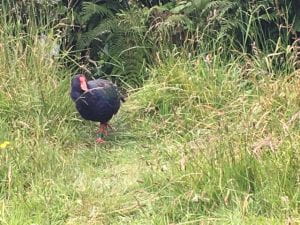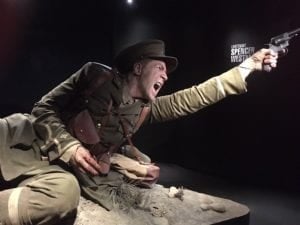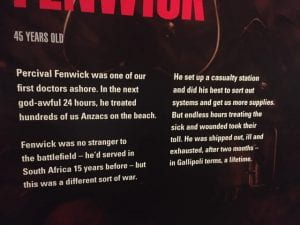Two and a half days in Wellington were hardly enough. From the tour of Weta Studios to Zeelandia to Te Papa, the National Museum, we were merely skimming the cream. It is gorgeous seaport with an entertaining waterfront and a sanctuary for natural preserves, such as the Botanical Garden and Zeelandia.
We delighted in Zeelandia on Saturday, the best day outdoors:
. . . the world’s first fully-fenced urban ecosanctuary, with an extraordinary 500-year vision to restore a Wellington valley’s forest and freshwater ecosystems as closely as possible to their pre-human state. The 225 hectare ecosanctuary is a groundbreaking conservation project that has reintroduced over 20 species of native wildlife back into the area, some of which were previously absent from mainland New Zealand for over 100 years. https://www.visitzealandia.com/
We ate lunch, then climbed the central Lake Road to the Dam. There was a fair amount of foot traffic, but the birds displayed themselves with little concern for their safety. Many came to feeding areas, like the Takahe and the Kaka below. The Kaka feeder had a platform that sprung open a cover, so he could grab a bite from inside. Like any parrot he grabbed a bite, took it to the neighboring branch, consumed it, and returned for more
The Paradise Shelduck was actually in an open area with two chicks and would make assault maneuvers at anyone who approached too closely, but at a respectful four feet was content to have us watch her and the chicks.
The New Zealand Falcon “(kārearea) . . . is the country’s most threatened bird of prey, with only around 3000–5000 breeding pairs remaining” https://en.wikipedia.org/wiki/New_Zealand_falcon. We encounter this guy calmly roosting over a path on the main Lake Road on our return trip. While we watched, one of the docents radioed a colleague to come see this wonder. Apparently even the resident naturalists are amazed by rare sightings in Zeelandia.
Less surprising was the Tuatara (lizard) sighting in a protected research area. We could view them from behind a fenced in area, almost invisible in the brown undergrowth. The single species of tuatara is the only surviving member of its order, which flourished around 200 million years ago. https://en.wikipedia.org/wiki/Tuatara
Saturday evening Victoria and I dined at the Hotel Bristol with good New Zealand fare and Mac’s beer, probably the best brewery I tasted here. Below a shot of Andy Gartrell, who performed a good version of Gordon Lightfoot at the bar. We stayed through his first set and applauded enthusiastically, sometimes by ourselves. Probably in a generational time warp.
On Sunday morning we had a selective and fascinating tour of the National Museum with our guide Bruce, including highlights of the Treaty of Waitangi, a rare preserved “collossal squid,” and a frozen room full of confetti.  Most noteworthy was the exhibit designed for the commemoration of the soldiers of New Zealand in their skirmishes of World War II.
Most noteworthy was the exhibit designed for the commemoration of the soldiers of New Zealand in their skirmishes of World War II.
These larger-than-life images were constructed by the artists of Weta Studios for display in this exhibit, which has been recognized as the outstanding museum exhibit in the world (by somebody, I forget whom). The first figure (right) of Lt. Spencer Westmacott and figure of Dr. Percival Fenwick, represented the most bloody Battle of Gallipoli. The eight-month campaign with 7,991 New Zealand casualties “is often considered to be the beginning of Australian and New Zealand national consciousness; 25 April, the anniversary of the landings, is known as ANZAC Day, the most significant commemoration of military casualties and veterans in the two countries, surpassing Remembrance Day (Armistice Day).” wikipedia.org/wiki/Gallipoli_campaign#Casualties.
The Battle for Chunuk represented the later contributions of the Maori regiment, which was refused weapons at first, because the British feared they would turn them on their own troops. After some negotiation the fierce Maori regiment obtained the right to bear arms, as witnessed by the machine gunner below.
Other images include a nurse, Lottie Le Gallais, and an infantryman Cecil Malthus. I am sorry I have less documentation on them, because they show the breadth of the exhibit’s view of the Gallipoli campaign. I will add photos, as I find them.











 Fenwick
Fenwick




